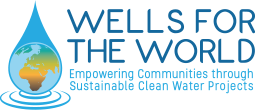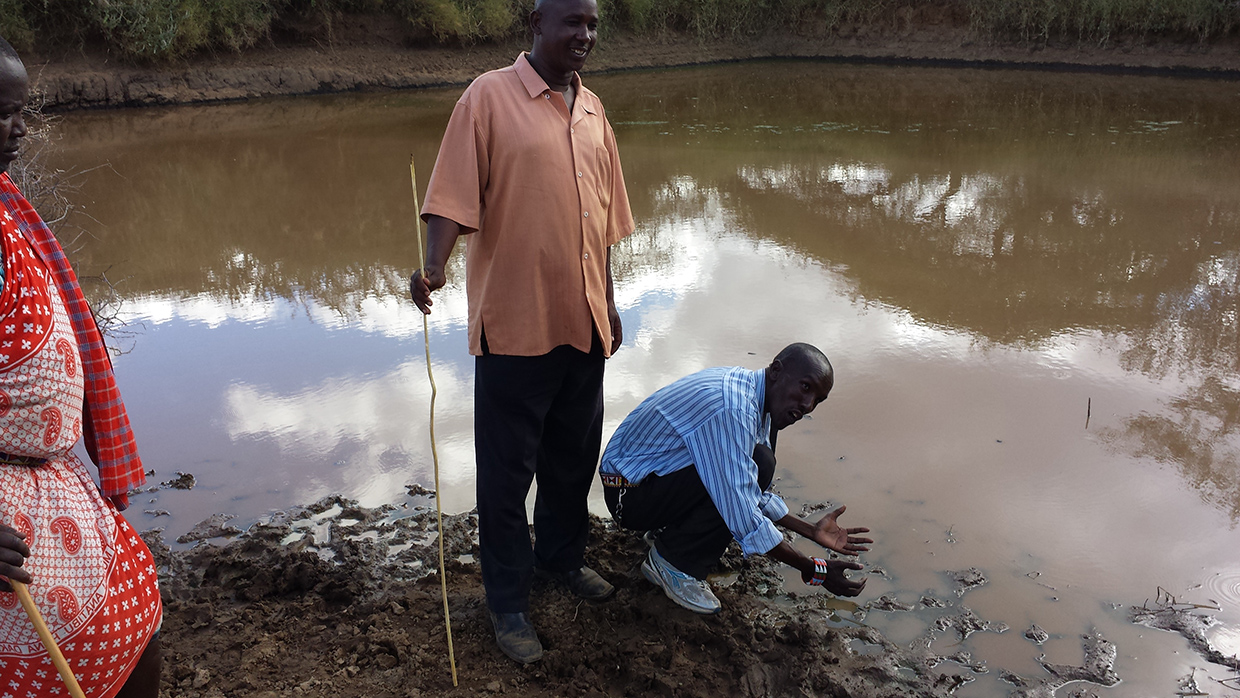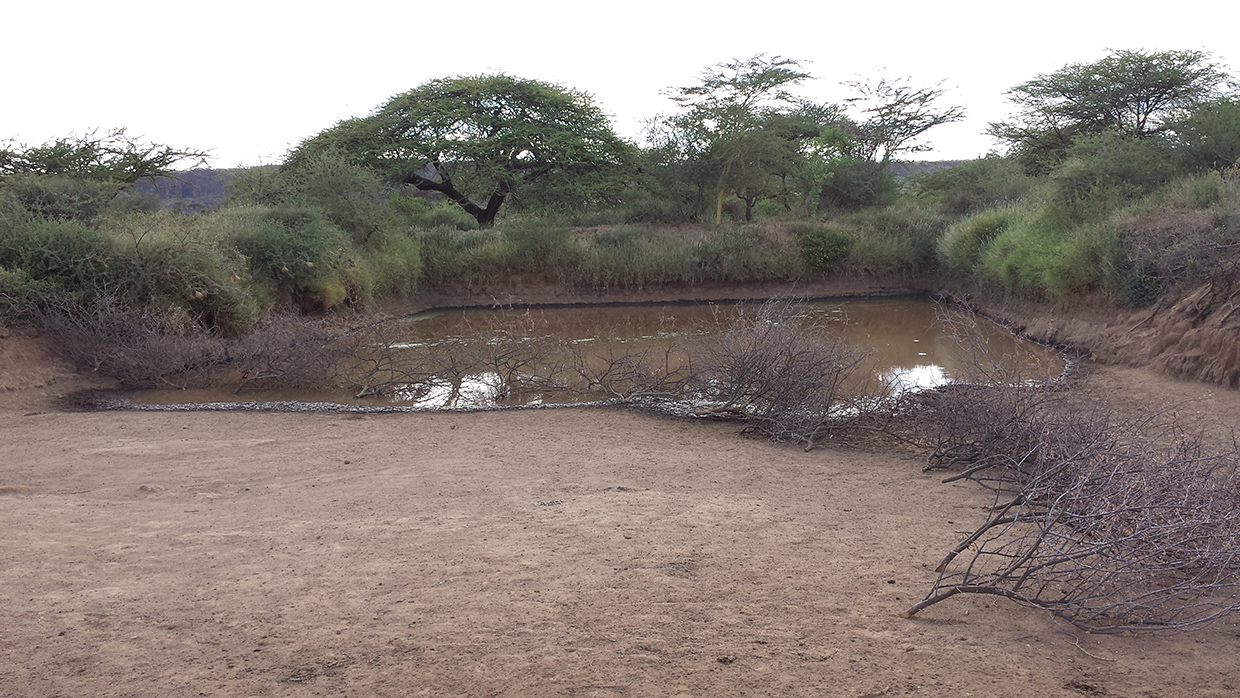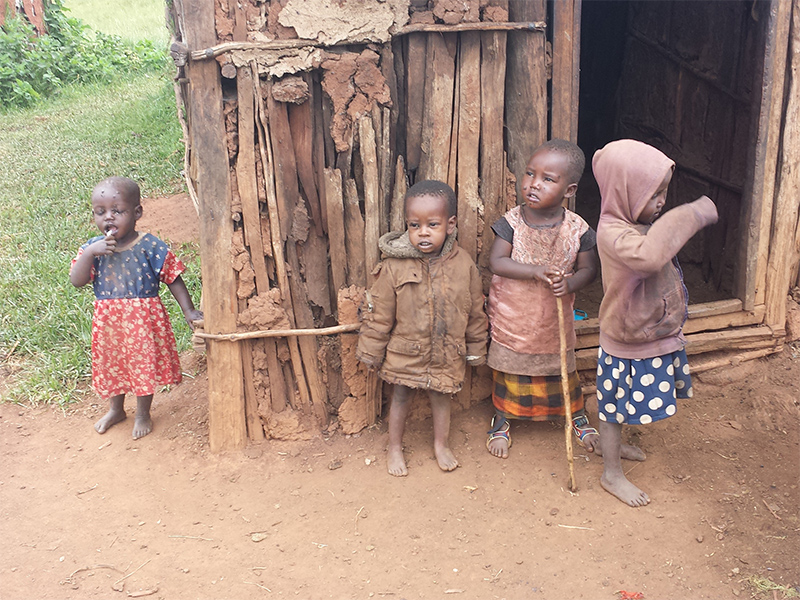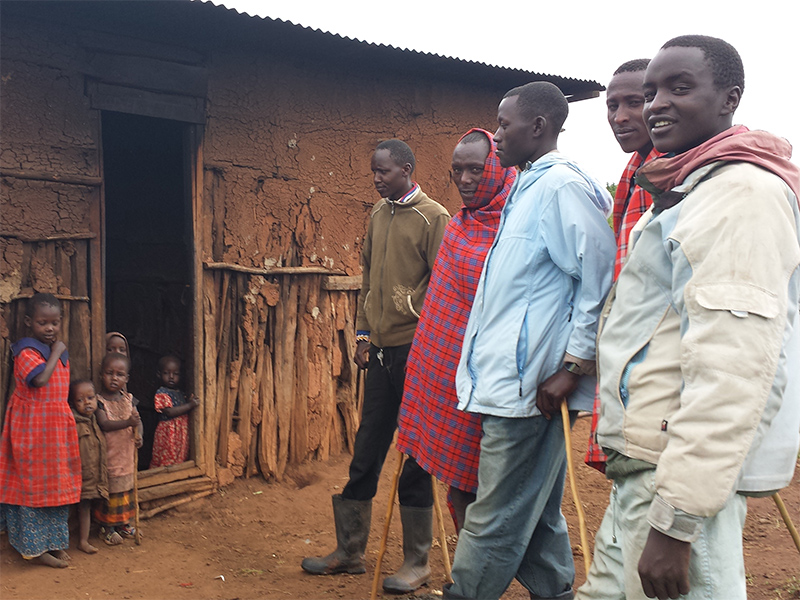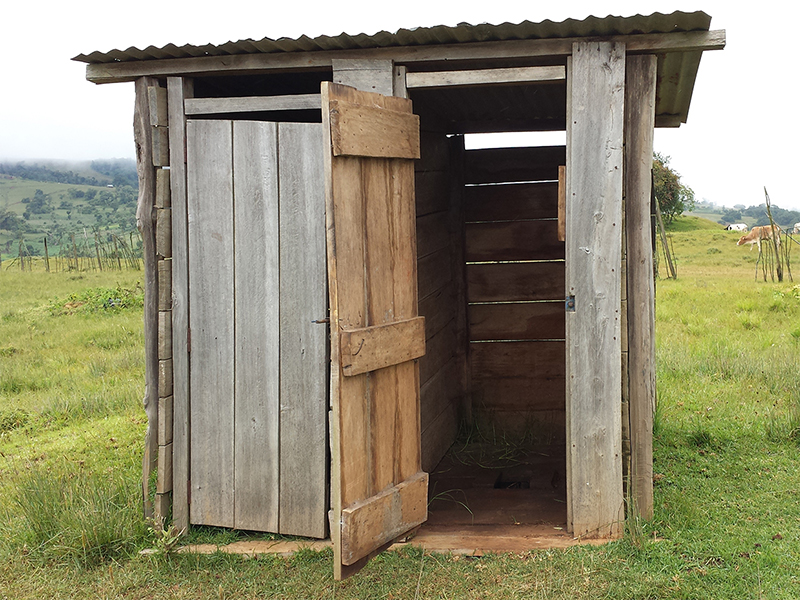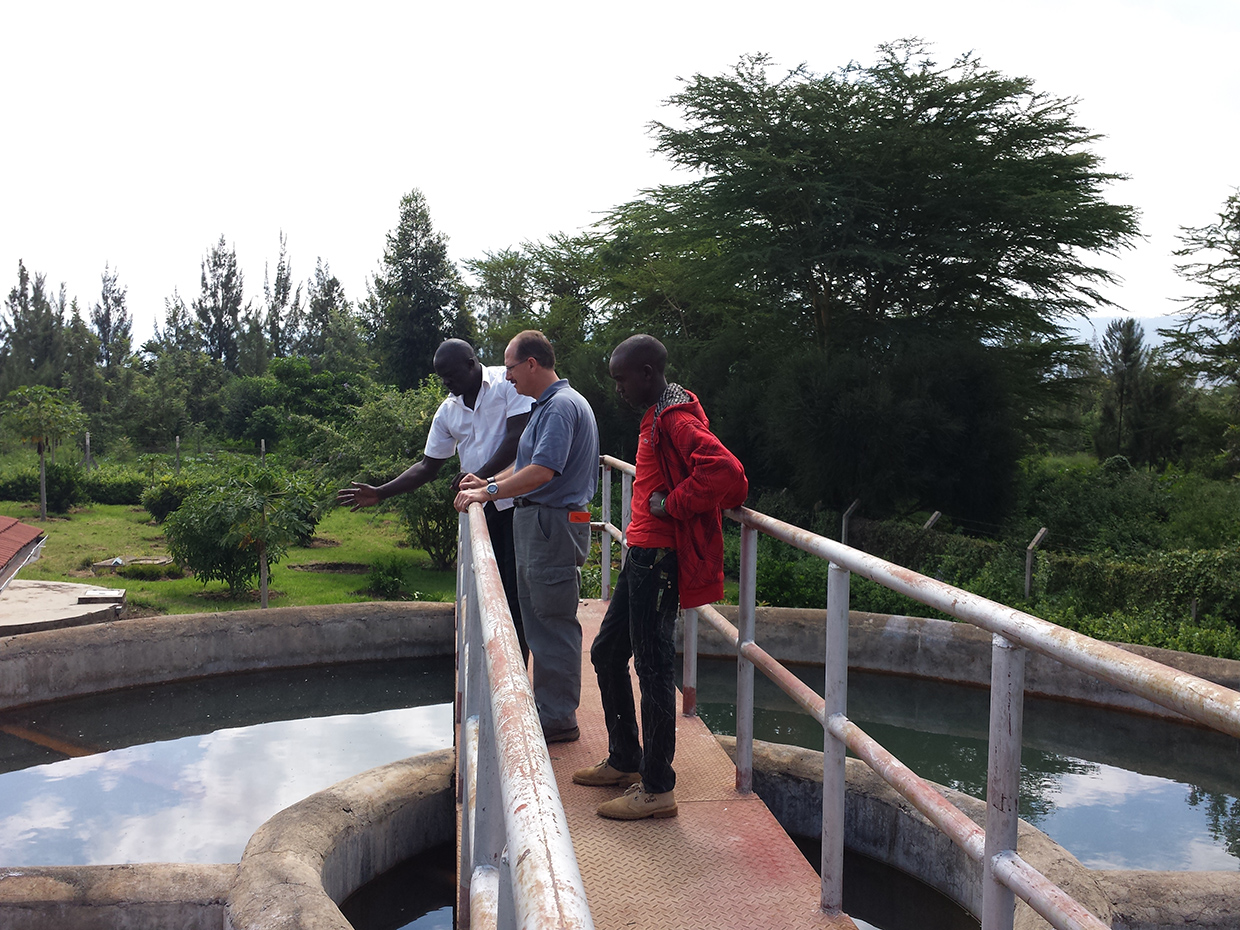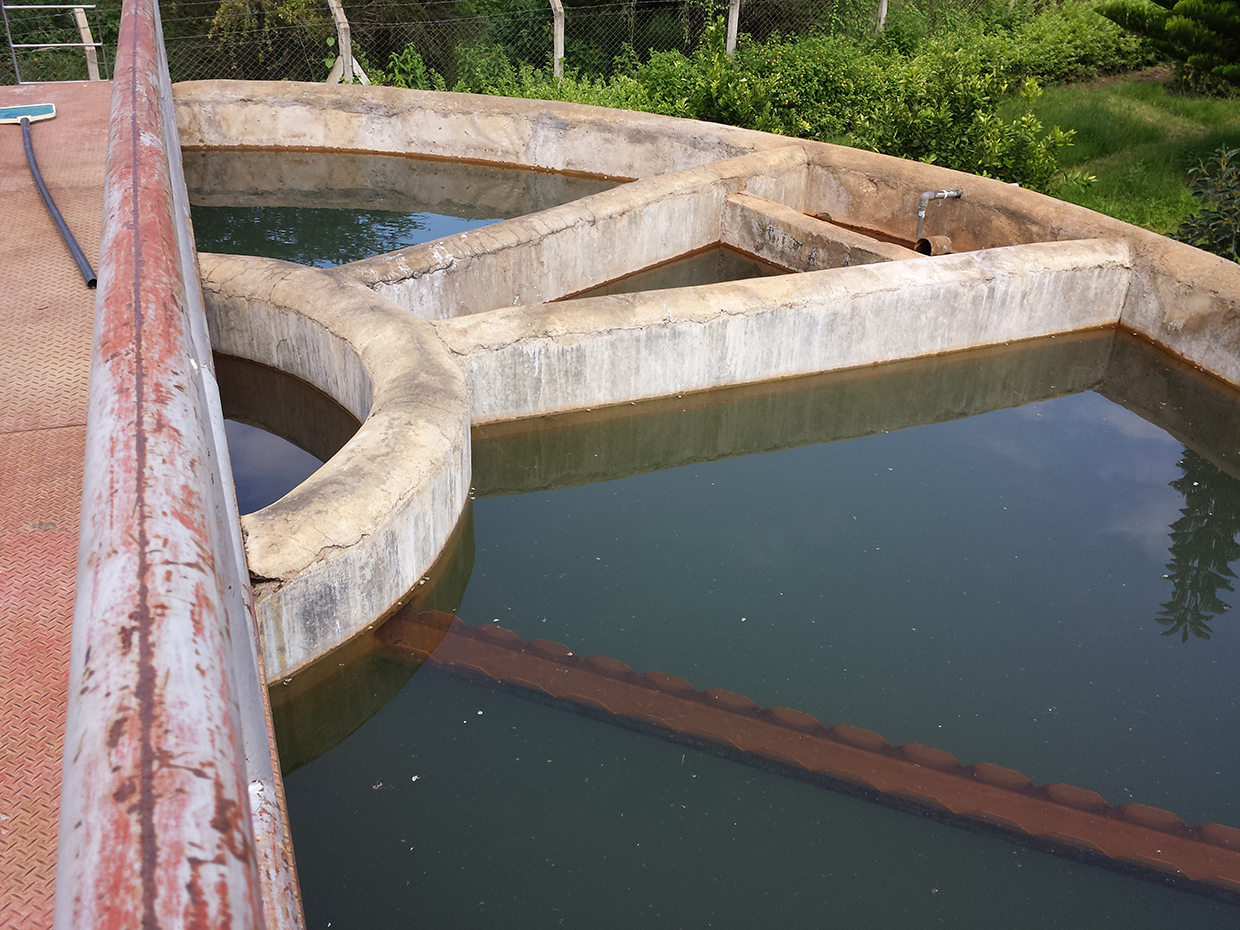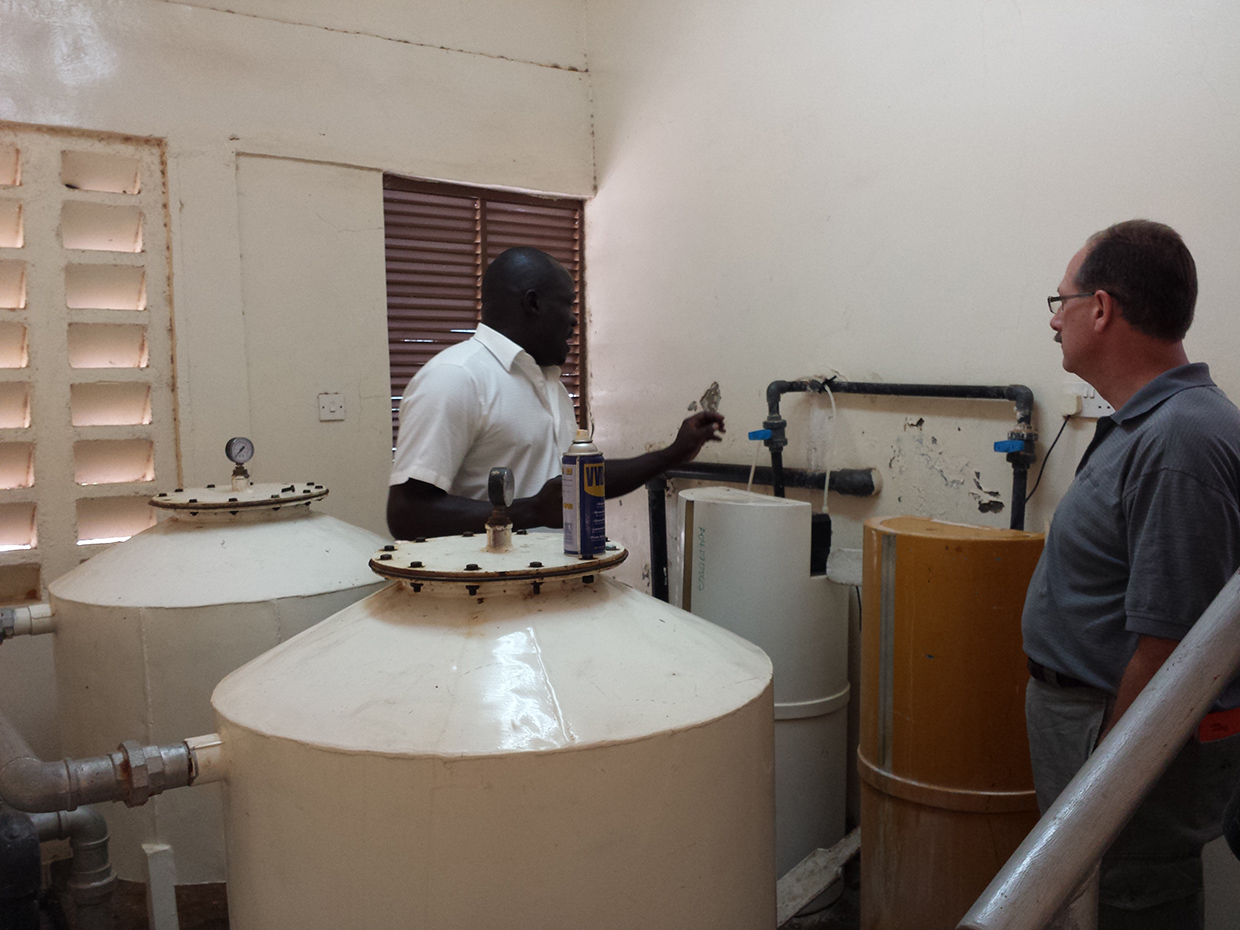Planned Water Projects in Maasailand (Kenya)
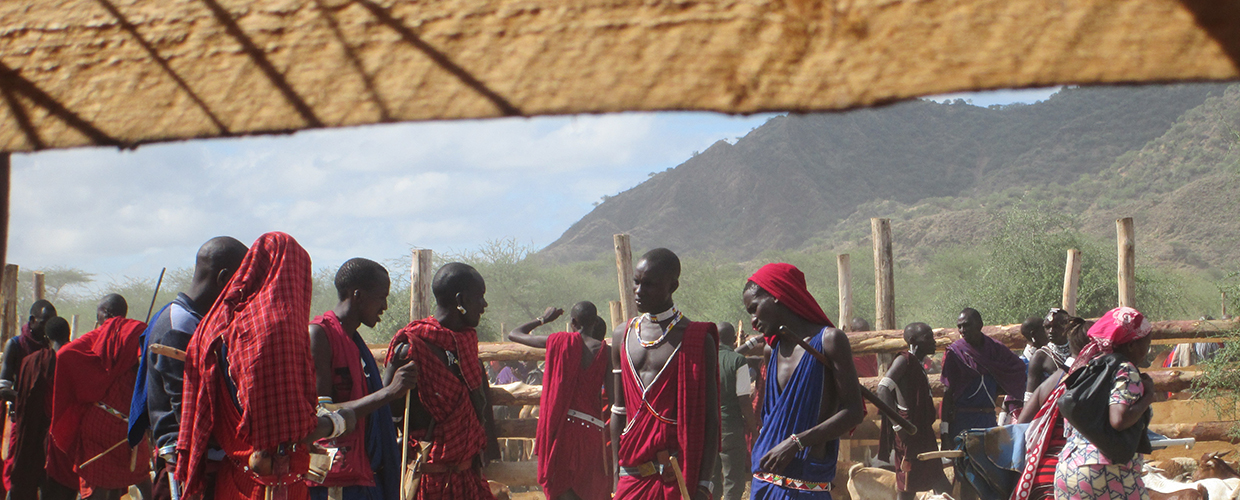
During our meetings over a two day period with the KINEK WRUA, we were able to visit several water related features in the area, several of which the KINEK WRUA would like to explore as possible water projects. The first was a typical catchment (see photos on right) or retention basin, which collects rain water, and like most catchments in Maasailand the runoff comes from pastureland, which can pickup contaminants from the animals. The striking thing about the catchment was how muddy the water was and the fact that the animals were allowed to drink directly from the catchment water, which results in further contamination. In fact, there was donkey dung floating in the water. The catchment water is a source of drinking water for those it services and the process involves using either a 5-gallon (20 liter) or a 2.5-gallon (10 liter) barrel to collect the water directly from the catchment, allowing some of the sediment to settle out of the water over a few days, then decanting the often still cloudy water into another barrel and either drinking the water untreated or using it to make Chai tea (usually made with 50/50 water and raw goat milk boiled with tea and sugar). We were offered this "drinking" water twice while in Magadi, Kenya but turned it down because it would have made us sick. And, don't be fooled, this water causes illness even for the Maasai who drink it, maybe not continually (well at least at a full sickness level), but typically they will have several bouts of sickness per year when their immune systems are down. In fact, Chief James, who we were supposed to spend two days with in Loita Hills, Kenya (below & to the right), was sick in bed the whole time, and the second day we had to rush him to the hospital for treatment. Chief James had Typhoid that he said he had gotten from drinking the water in a nearby village while visiting friends. So, water filtration and purification is a huge need in Maasailand and throughout much of the world! Therefore, we will be researching and looking to partner with other charities that are working on filtration and purification systems, so we can provide these types of systems to the multitudes in need.
We will also work to obtain more information about other the wells throughout Maasailand that may need to be repaired and maintained, by using our connections through Justus and the KINEK WRUA to get the word out to other WRMA's that we would be interested in knowing about other wells. The hope is to start with these existing wells because hopefully we can restore their usefulness for a reasonable cost; thereby, providing the most good (water) for the lowest cost. See our idea about raising funds to outfit a pump hoist vehicle under our Vision for the Future below.
Ewuaso's Water Distribution Center
We also visited Ewuaso's water distribution center (photos), located on the eastern edge of Ewuaso. This distribution center consists of four concrete tanks, and a catchment basin that captures the overflow from the tanks (not rain water). However, the tanks do not currently overflow because they are not completely meeting the need for water in Ewuaso and for sure not in the surrounding area, where the KINEK WRUA believes another 20,000 persons could be served if enough flow and pressure could be provided to reach those areas. To hopefully provide that flow and pressure the KINEK WRUA has two plans, one is to raise their source water intake and the other is to install a second pipeline from their water source. So we visited Ewuaso's water source area (photos), which is located about 7 miles (11 km) away. Those tanks in Ewuaso, are piped to the water source through 7 miles of 6 inch galvanized steel pipes. The water source is a small dam, vault and valve system on a permanent stream coming off of the Great Rift Valley eastern escarpment. The current dam is located near the valley floor and raising the dam further up the stream valley would provide greater pressure and thereby flow through the existing water pipeline. During the visit we went up the valley about 60 or 80 feet higher than the current dam; however, the KINEK WRUA would like to put the new dam about twice that height higher within the stream valley in an area accessible by a private road near a plateau in the river valley so that concrete...
...trucks can more closely access the new dam area. Although this seems like a huge undertaking, this idea is an excellent one and is very feasible, given that the existing dam is only about 10 feet tall and 50 feet wide. The new dam would likely be about the same height and width, but raising the dam height 100 to 150 feet would increase the pressure by 43 psi to 65 psi, which would likely increase the flow by about 20% to 35%. Adding another 6 inch pipeline would double the new flow rate, and about 2.5 times the current flow rate. Obviously a 7 mile (11 km) pipeline is going to be very expensive; however, we have a unique idea to repurpose steel piping from another industry that is booming right now that might be able to make this a reality. However, for now the dam is a high priority and the new pipeline is a long-term goal.
